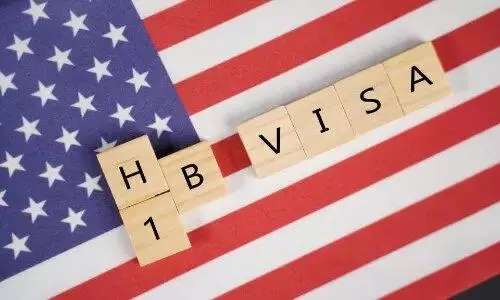
The revamped programme will streamline the approval process and offer greater flexibility, enabling employers to retain skilled employees more effectively, according to the USCIS. Representative image
H-1B visa programme revamped: 5 major changes you need to know
The updated programme aims to improve fairness, transparency, and efficiency in the hiring of foreign workers in the US

The US has made significant changes to its H-1B visa programme since Friday (January 17). The revamped programme will streamline the approval process and offer greater flexibility, enabling employers to retain skilled employees more effectively, according to the US Citizenship and Immigration Services (USCIS).
“Proposed changes to improve the H-1B programme would create jobs and benefit not only US employers but also professionals who want to contribute to the United States’ success,” said a statement from the Department of Homeland Security (DHS).
Also Read: Days after backing H-1B visa, Musk says system ‘broken’, needs reforms
The H-1B visa is a non-immigrant programme that permits American companies to hire foreign workers on a temporary basis in specialty occupations that require advanced knowledge. Indians accounted for 72 per cent of the H-1B visas issued in 2023. It is reported that Indian professionals may benefit significantly from the revamped H-1B programme.
The DHS outlined the key objectives in modernising the H-1B programme.
1. Clarification of requirements: The definition of “specialty occupation” has been revised to emphasise a logical connection between a degree and job duties, while still requiring that the degree be “directly related to the position”.
2. Improved transition for students: Those with F-1 visas seeking to transition to H-1B status will benefit from an automatic extension of their F-1 visas until April 1 of the relevant year while their H-1B applications are under review. This will minimise disruptions to their lawful status and employment.
Also Read: Some relief for Indian IT firms, techies as Trump backs H-1B visa
3. Strengthening programme integrity: In order to prevent the misuse of the H-1B programme, employers would have to demonstrate the existence of a legitimate specialty occupation job for the visa beneficiary. The DHS may ask for documentation to verify the authenticity of the job offer. The purpose is to ensure compliance with the Labour Condition Application (LCA) and to confirm the employer’s legal presence in the US.
4. Revisions to cap-exemption rules: Non-profit and government organisations that focus on research as a fundamental activity will now qualify for H-1B cap exemptions. Also, some beneficiaries who provide essential support to qualifying organisations may also be eligible for cap exemptions.
Also Read: New US H-1B visa rules: What students and IT professionals can expect
5. Quicker processing: The new rule allows quicker processing for those previously approved for an H-1B visa, and extends eligibility to beneficiaries with a controlling interest in the petitioning organisation under certain conditions.
The new rule aims to enable US employers to fill critical job vacancies more effectively, address labour needs in critical fields, and strengthen the US economy.

